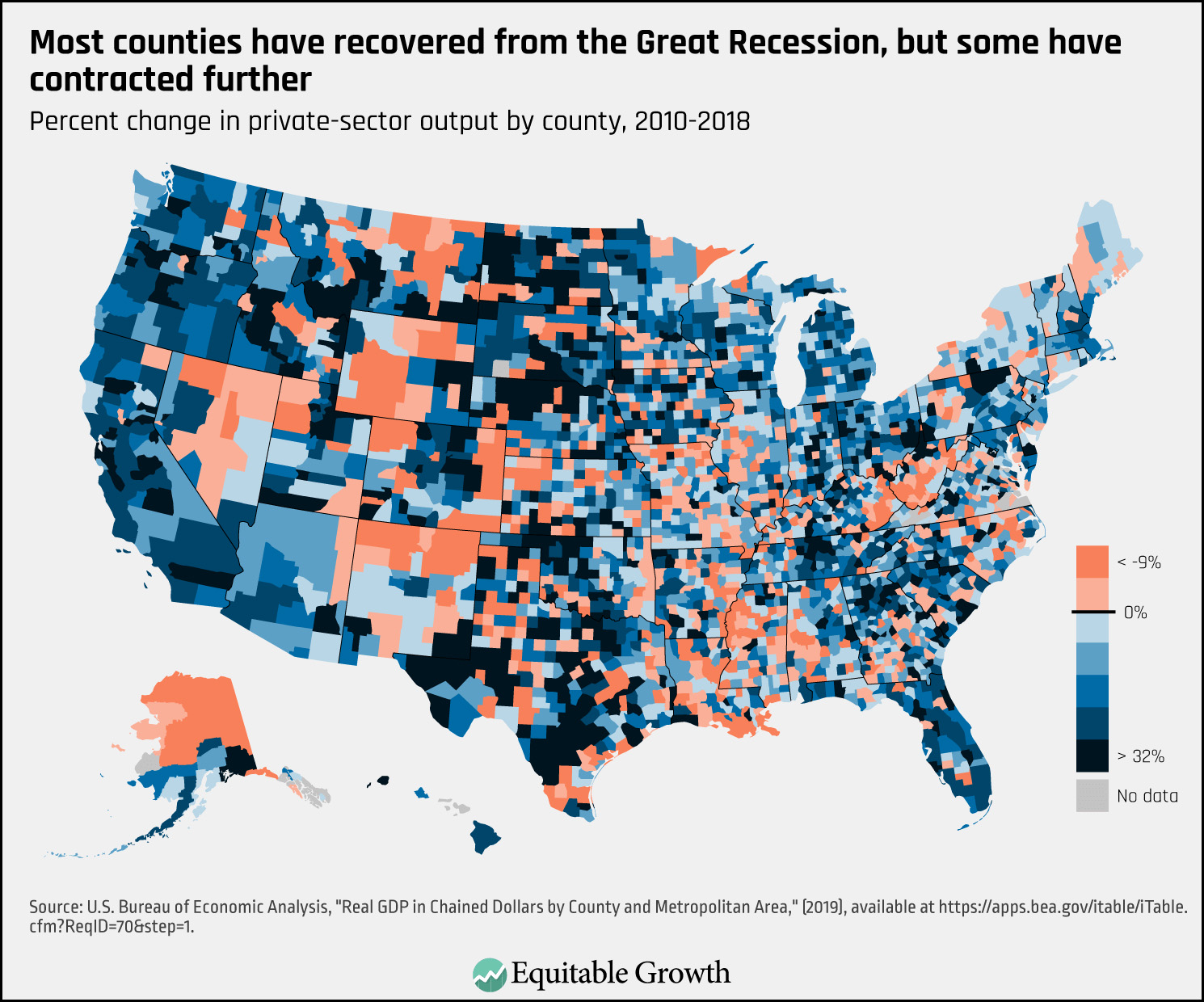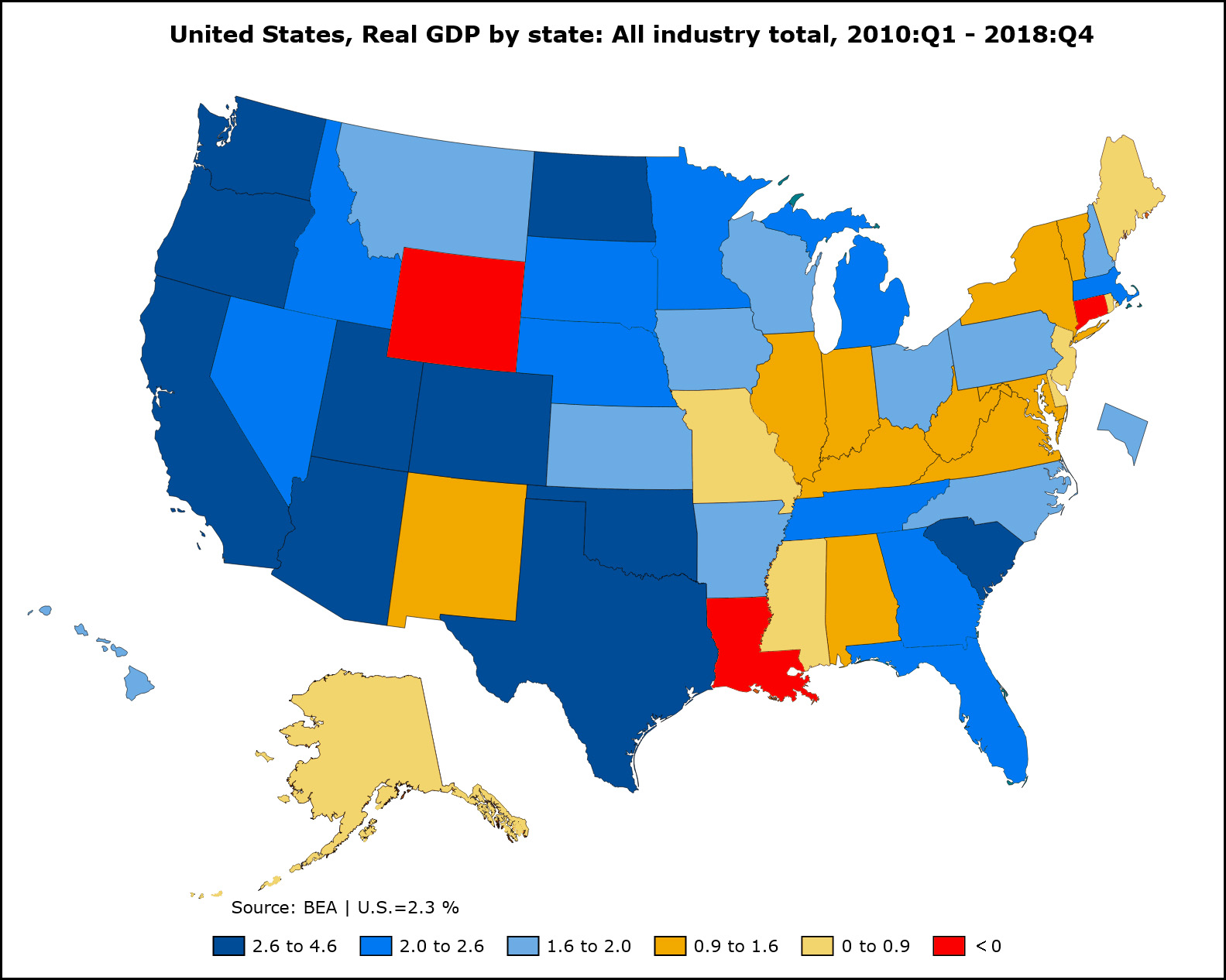Via Brad DeLong, here’s an interesting map. It shows the economic growth of every county in the United States since the end of the Great Recession:

This is really disturbing. It would be one thing if there were some counties that had declined since the economy peaked in 2007. It would be another thing if there were some counties that had declined over the course of just a year or two. That’s fairly normal. And it would be yet another thing if there were merely some counties that showed strong growth and some that showed weak growth. That’s normal too.
But if you start at the bottom of a deep recession and then go out eight years—all of which were years of strong economic growth—there shouldn’t be any counties that are literally shrinking. Or, at most, maybe a dozen or so special cases. But just eyeballing this, it looks like there are several hundred counties that have declined since the bottom of the Great Recession. DeLong comments:
If I had seen this pattern of regional growth and decline a decade ago, it would have made me less worried about the gerrymandering that the Constitution has built into the Senate. The people in declining areas are relatively poor, and they have little economic or cultural power, so giving them more political power might have created a fairer overall balance. Yet somehow it does not seem to have worked out that way: their senators are not fighting for a fairer division of wealth, but seem focused on achieving negative sum goals for the country at large—if we can’t be prosperous, you shouldn’t be prosperous either.
One problem is that in nearly every state there are counties that have grown strongly in addition to the ones that have declined. So from a senator’s perspective, nearly all of them represent states that are growing:

I still find this surprising, though. There are nine states that have grown less than 1 percent over a period of eight years, and three that have literally contracted. If you calculate per-capita GDP it’s even worse: six states have shown outright contraction.
I’m not sure what to think of this. But it surprised me, so it might surprise you too.

















